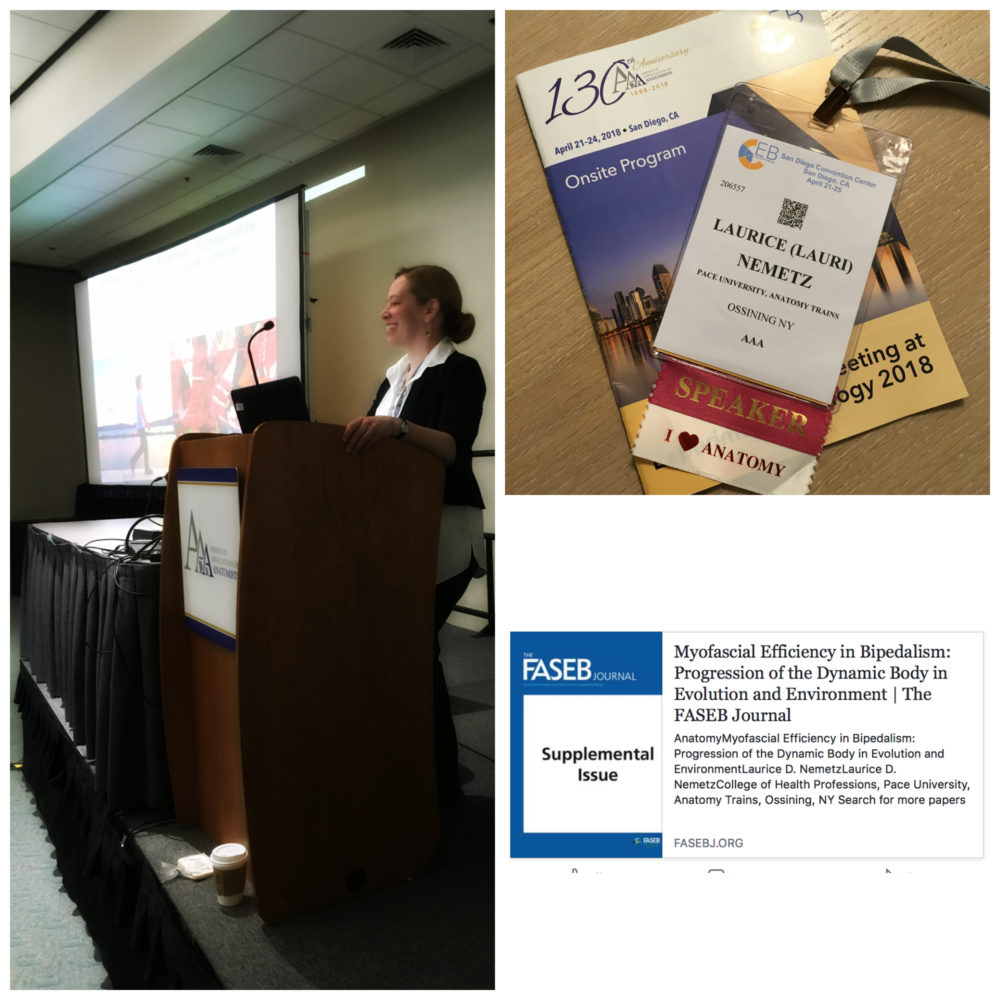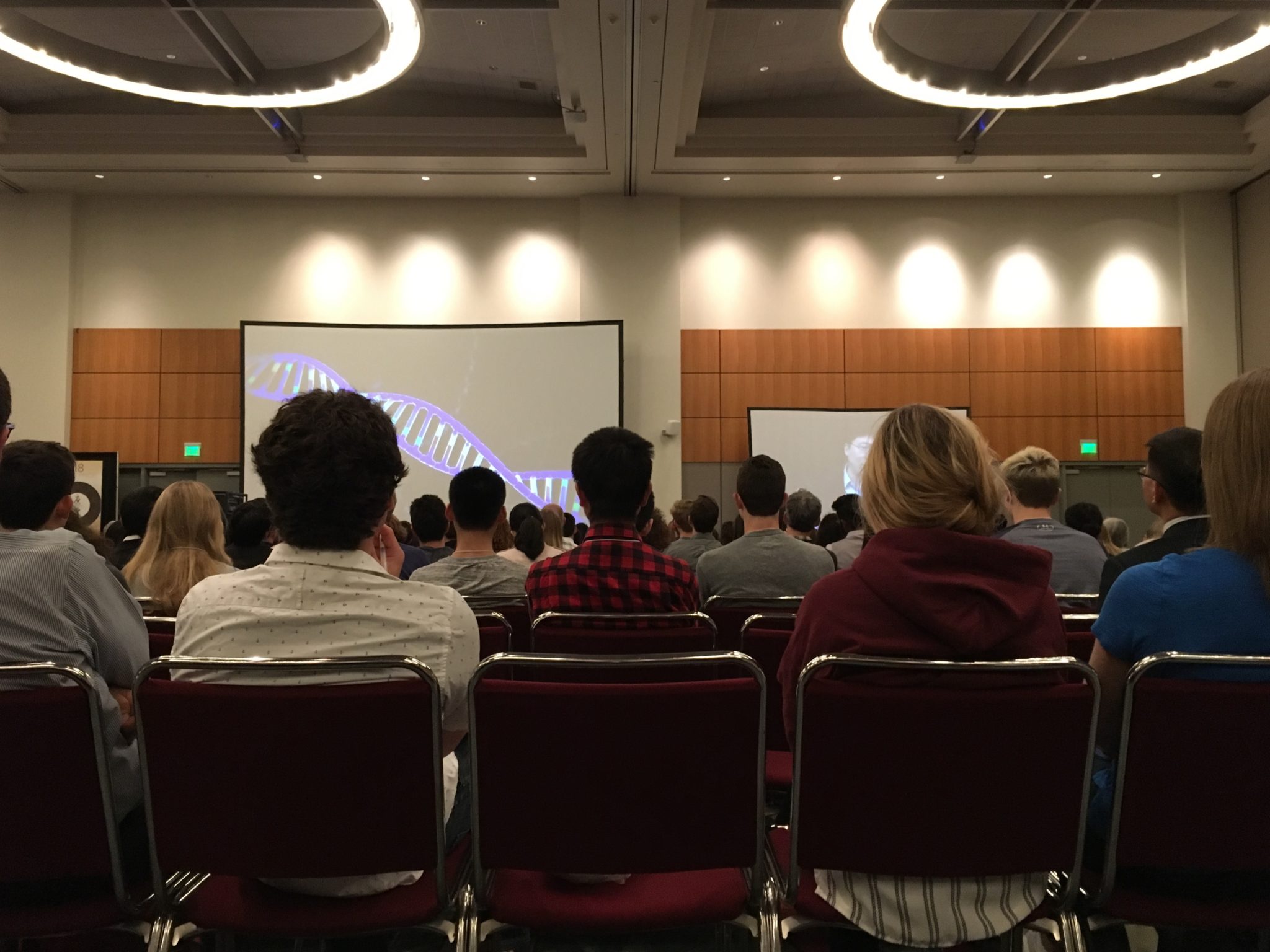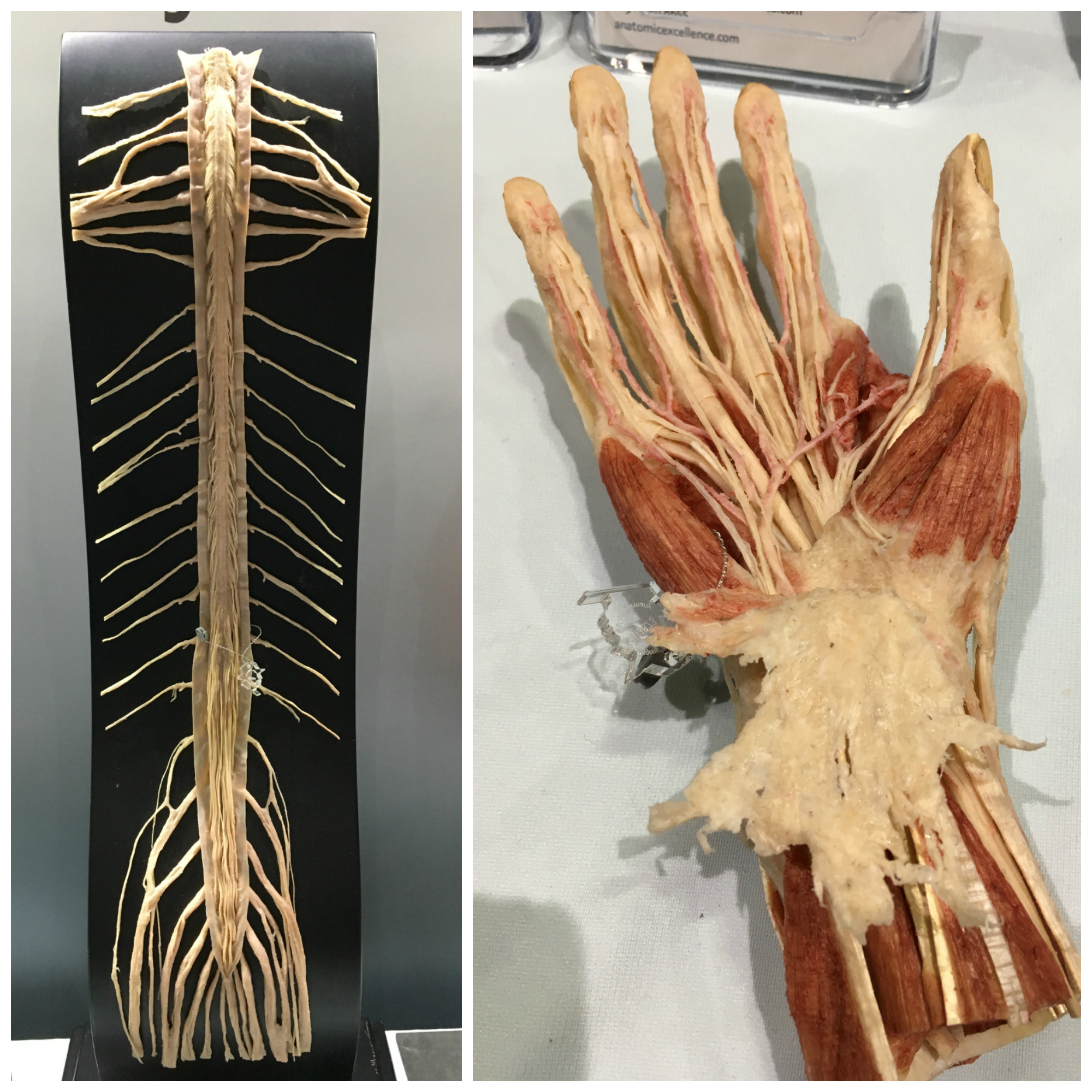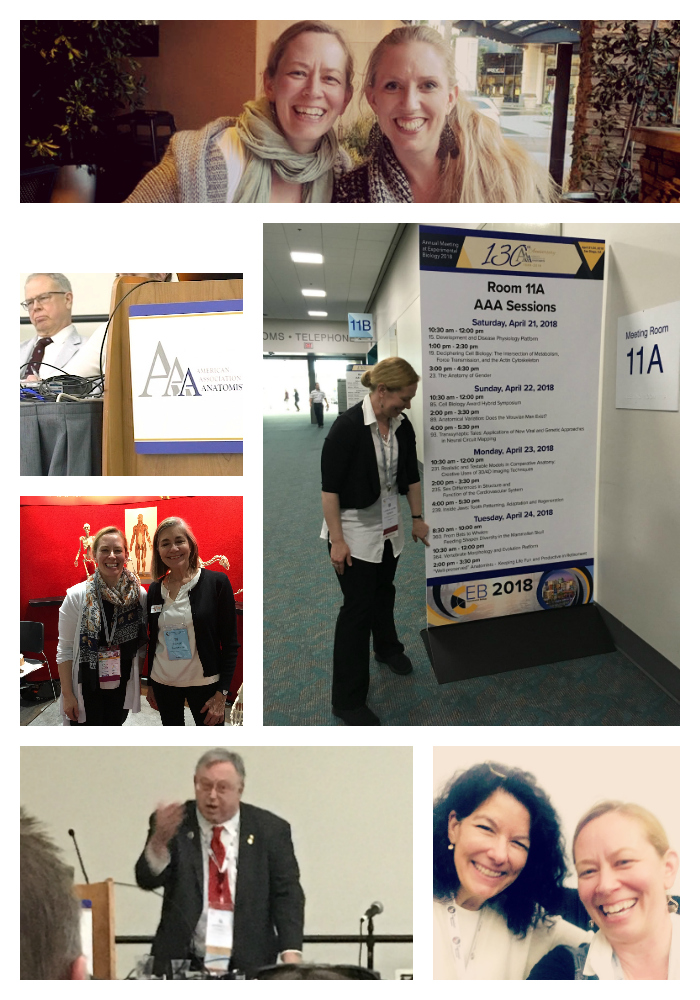by guest blogger, Anatomy Trains faculty, Lauri Nemetz.
I was honored to present some of my most recent work highlighting Anatomy Trains ® as part of the April 2018 Experimental Biology conference held in San Diego under the society of the American Association of Anatomists. By the Experimental Biology website’s own statistics, this event is “the annual meeting of five societies comprised of more than 14,000 scientists and 25 guest societies” and is a huge gathering of the latest in scientific thought and research.

This year I presented, “Myofascial Efficiency in Bipedalism: Progression of the Dynamic Body in Evolution and Environment”. The role of fascia can explain a part of our efficiency in bipedalism, and also how humans utilize movement to practice the coordination between our myofascial lines. We can reflect on our evolution and look towards the future of how we utilize our bodies in the world that is interacting less with the natural environment. I’ll be expanding some of this work for a longer paper, but in the meantime, please click here for the link to the published abstract.
I was pleased that my oral presentation was part of a platform on “Vertebrate Morphology and Evolution” and I had several excellent questions from those involved prominently in both the bipedalism and dissection worlds.

Other highlights included the vast numbers of exhibits, including Von Hagens Plastination models, Anatomy in Clay®, 3D learning tools, and the newest from scientific publishers.

Presentations of note included a symposium on fascia, with Dr. Thomas Findley (Rutgers New Jersey Medical School), always prominent in the Fascial Research Congresses, giving a talk on “Clinical Aspects and Cellular Mechanisms of Fascia, their Interactions, and Importance in Medicine”. The interest is growing and the mainstream anatomy world is becoming more receptive to this area of study. The recent news on the interstitium crossed a few talks and conversations, and while many disagree with the classification as an organ system, most seem to feel that the recent news brought needed attention to not only this particular space, but to fascia as a whole.
Another presentation, “Anatomical Variation: Does the Vitruvian Man Exist?” explored the anatomical constant of variation in vascular asymmetries, accessory muscles, situs inversus and more. This panel emphasized the importance of clinical dissection as a vital part of the learning process, highlighting that variation is the anatomical constant. Another group dove deeper into both the history and current issues in dissection in “Anatomy in Transition: Challenges and Opportunities Addressed Through Historical and Ethical Inquiry.” There was less emphasis this year on biological scaffolds (I presented a 2016 poster on our work in AT labs – click here for abstract). However, I was thrilled to hear and meet Tanja Dominko, who is continuing her work with biological scaffold from plant tissue (WPI Team Grows Heart Tissue on Spinach Leaves) which we’ve shared before.
The well-attended “Anatomy of Gender” session explored experiences of anatomy from the trans-perspective as well as those who work with them, including a surgeon who explained his perspective for choices in his surgical techniques. Other take-aways that I scribbled in my notes included the statistic that gross anatomy hours for doctors numbered in 549 in 1902, but by 2008 had already dwindled to 165. Although some of this is supplemented by strong advances in technologies (particularly in virtual reality), the important of hands-on experience was noted in several talks, not only for understanding anatomical variation, but the reality of life and death that is dealt with in anatomy and how we approach our patients and clients in our different professions.
In closing his speech for the A.J. Ladman Exemplary Service Award Lecture and American Association of Anatomists meeting, Dr. Jeffrey Laitman (Icahn School of Medicine at Mount Sinai) quoted his childhood hero Jackie Robinson with his words, “a life is not important except in the impact it has on other lives”. I continue to be inspired and honored to be part of a group of anatomists truly interested in service towards others. Thanks to Tom Myers, my colleagues, and Anatomy Trains for the inspiration in presenting my latest work.






